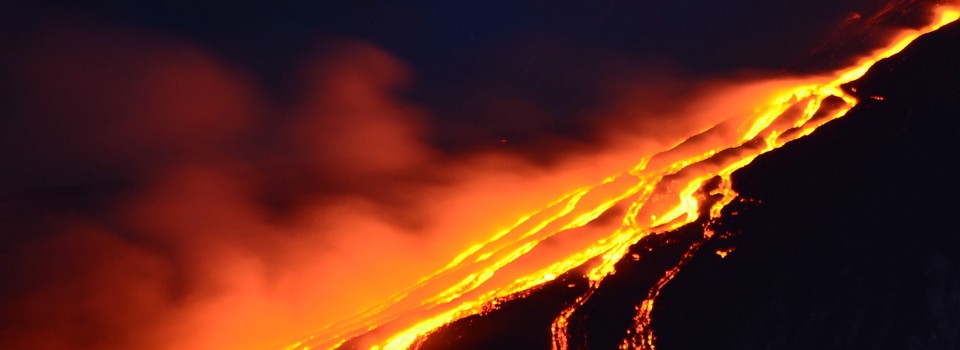Dall'inizio di aprile 2016 si è osservata una graduale ripresa dell'attività eruttiva sommitale all'Etna, che si è manifestato con un aumento dell'emissione di gas soprattutto dal Cratere di Nord-Est (NEC) e dalla bocca apertasi il 25 novembre 2015 sull'alto fianco orientale del Nuovo Cratere di Sud-Est (NSEC). Tale degassamento è stato accompagnato, in maniera molto discontinua, da piccole emissioni di cenere; durante la prima metà di maggio queste emissioni dal NSEC hanno prodotto anche piccole anomalie riconoscibili nelle immagini della telecamera termica di Monte Cagliato (EMCT). Nella giornata del 7 maggio, si è osservato un aumento dell'ampiezza del tremore vulcanico la cui sorgente si è spostata verso il NSEC, e allo stesso tempo è comparsa una sorgente di segnali infrasonici in corrispondenza del NSEC; tuttavia le cattive condizioni meteorologiche hanno solo permesso di osservare una modesta emissione di cenere dal NSEC (bocca del 25 novembre) e dal NEC.
Nella notte del 16 maggio, si sono osservati deboli e rari bagliori alla bocca del 25 novembre del NSEC, nuovamente accompagnati da segnali infrasonici con origine al medesimo cratere. Nelle prime ore del 17 maggio, le reti strumentali dell'INGV-Osservatorio Etneo (INGV-OE) hanno registrato un graduale aumento dell'ampiezza del tremore vulcanico, accompagnato da segnali infrasonici provenienti dal NEC e un intenso degassamento accompagnato da sporadiche e deboli emissioni di cenere dallo stesso cratere. Personale INGV-OE presente in zona Grotta del Gelo (sopra Randazzo) ha riferito di avere udito boati, probabilmente provenienti dal Cratere di Nord-Est.
Ulteriori aggiornamenti saranno tempestivamente comunicati.
Since early April 2016, there has been a gradual resumption of summit eruptive activity at Etna, which initially consisted of increased gas emission mainly from the Northeast Crater (NEC) and from the vent that had opened on 25 November 2015 on the upper east flank of the New Southeast Crater (NSEC). This was accompanied by rather discontinuous and small emissions of ash; during the first half of May, these emissions from the NSEC also produced small anomalies visible in the images of the thermal monitoring camera at Monte Cagliato (EMCT). On 7 May, an increase in the volcanic tremor amplitude, whose source shifted toward the NSEC, was accompanied by the appearance of a source of infrasonic signals at the NSEC; however, the poor weather conditions allowed only to observe a modest emission of ash from the NSEC (25 November vent) and from the NEC.
During the night of 16 May, very weak and rare glows were observd at the 25 November vent of the NSEC, again accompanied by infrasound signals originating from the same vent. On the early morning of 17 May, the monitoring network of the INGV-Osservatorio Etneo (INGV-OE) recorded a gradual increase of the volcanic tremor amplitude, accompanied by infrasound signals coming from the NEC, and intense degassing with occasional, weak ash emissions from the same crater. INGV-OE staff present in the area of the Grotta del Gelo (on the upper north-northwestern flank) reported hearing explosion sounds probably coming from the NEC.
Further updates will be posted shortly.
Fonte: Ingv Catania

